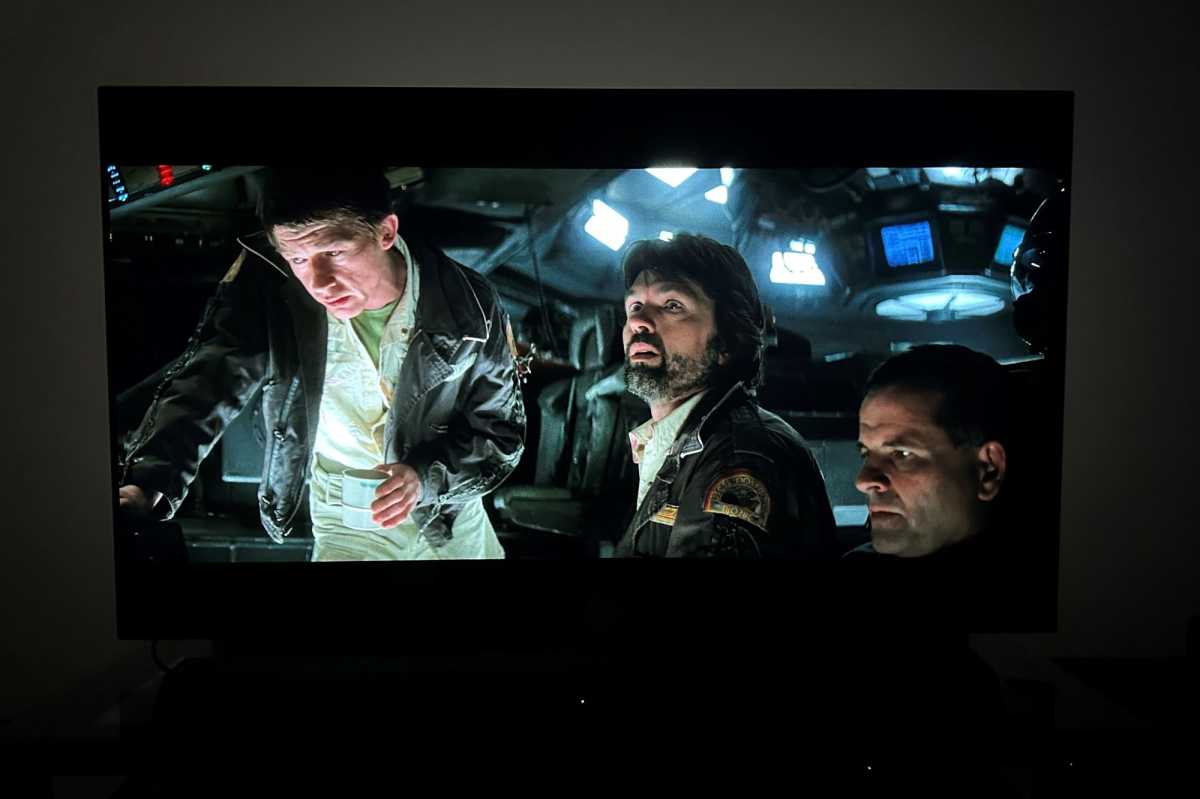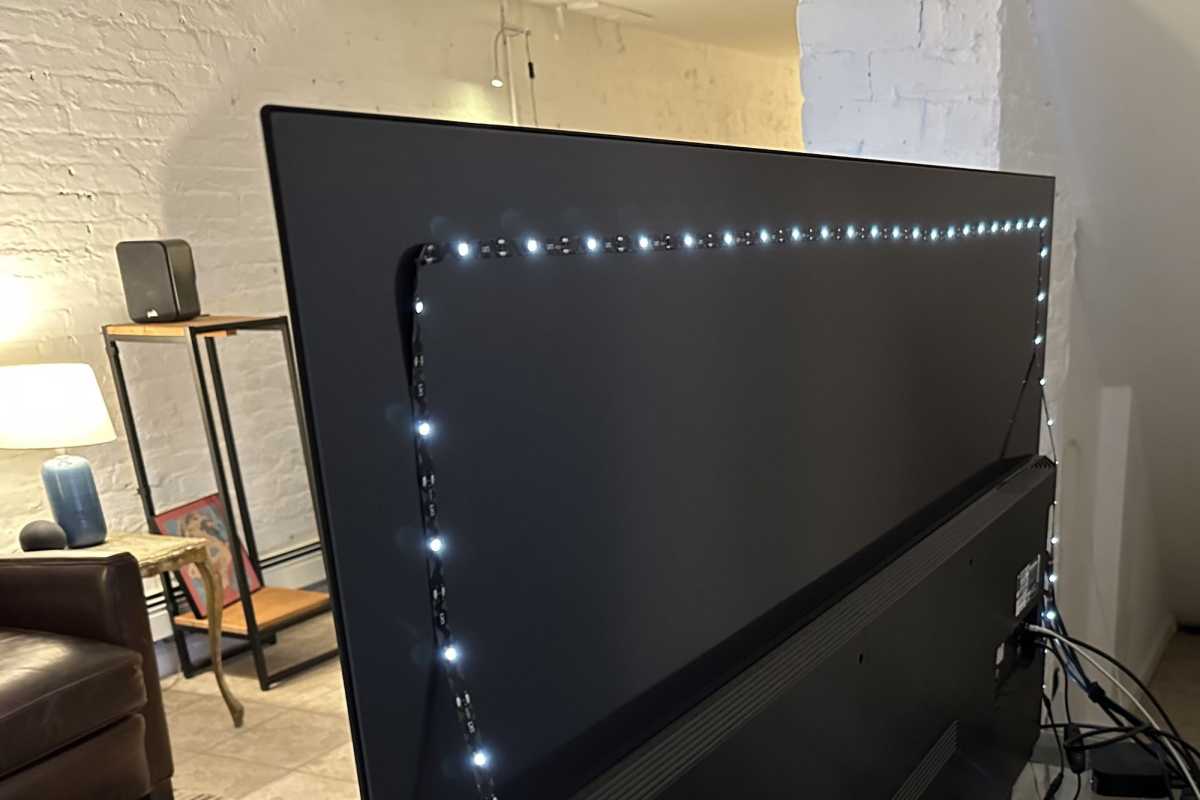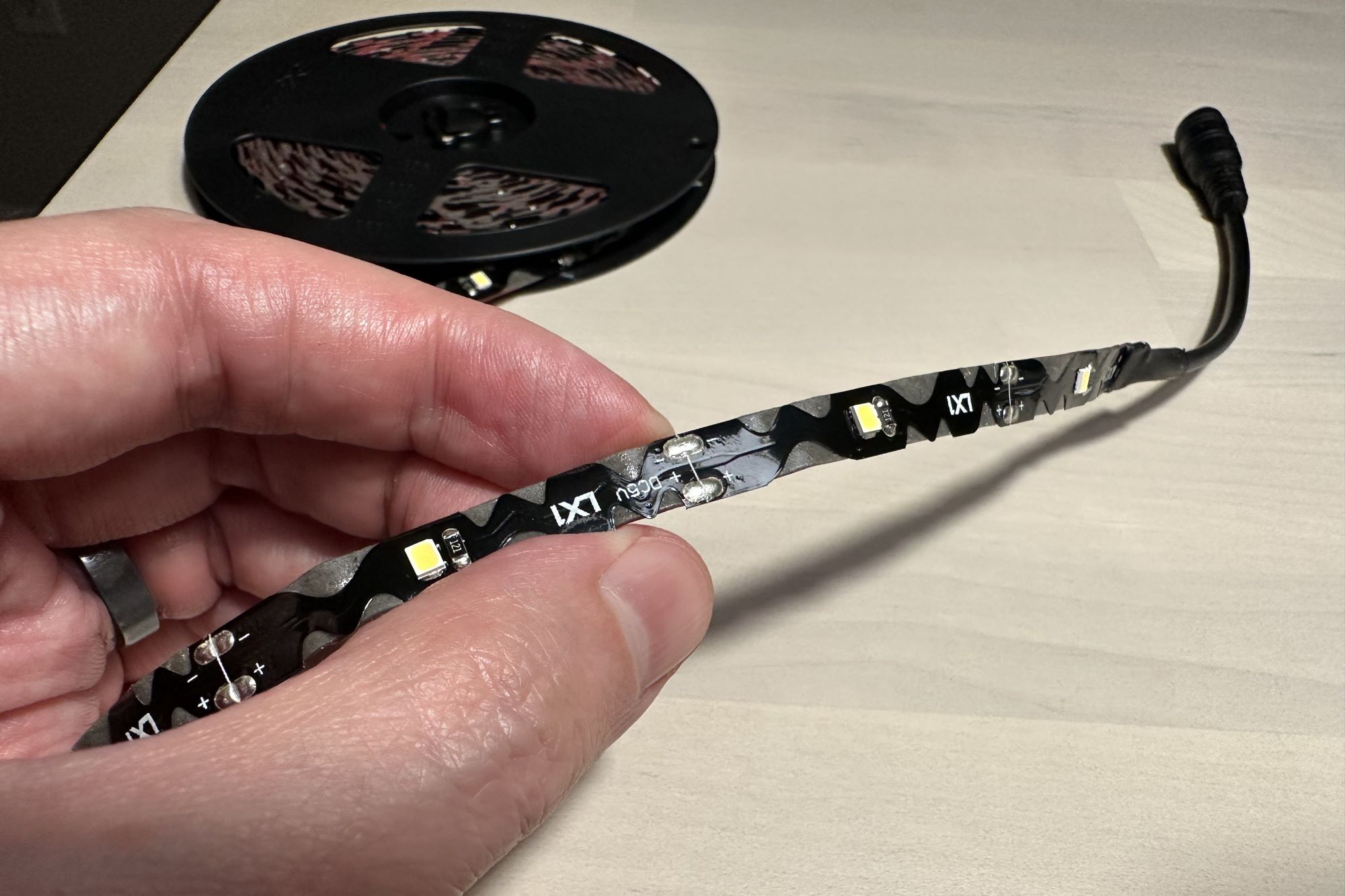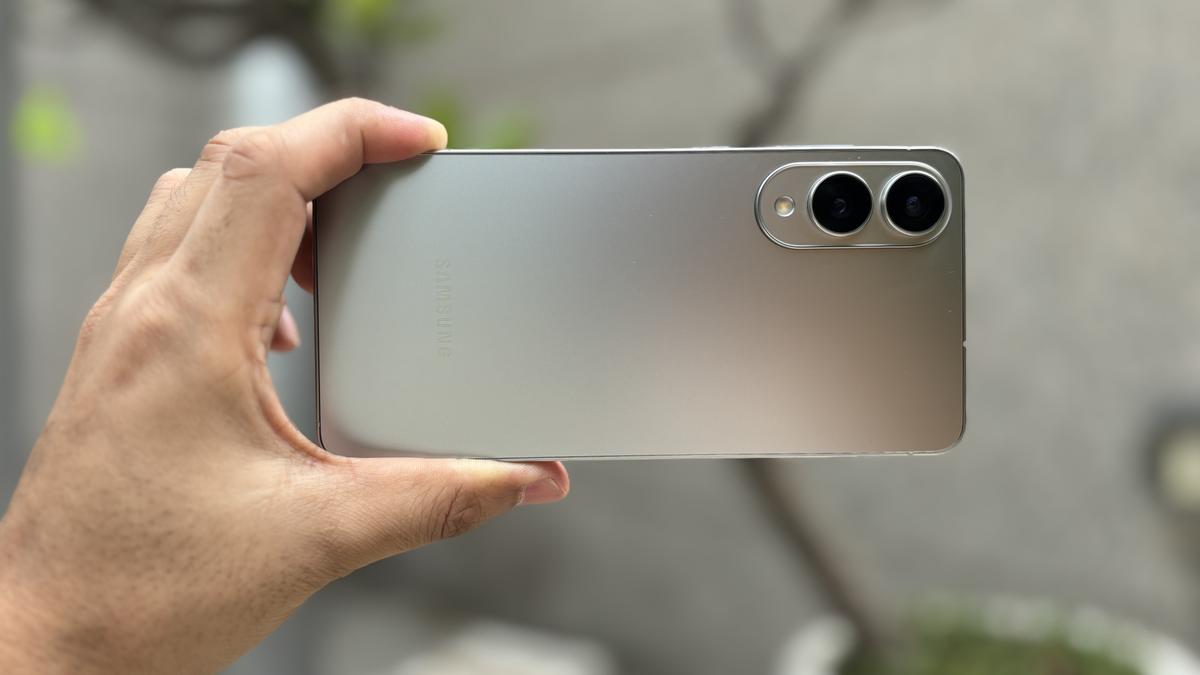You know those color LED light strips that sync with the images on your TV screen? I’m not a fan. They’re eye-catching, sure, but they’re also distracting (especially when they’re not working properly, which happens frequently), they mess with the perceived picture color, and they’re expensive.
There’s a far better and cheaper way to boost the picture on your TV, and as a bonus, you’ll be easing the eye strain that comes from watching a bright image in a dark room. This is a product I’ve been using for years, and I swear by it.
Yes, it’s still a light strip, but instead of the fancy color-syncing variety, it’s a white-light LED strip that’s tuned to 6500 Kelvin, the same daylight color temperature used as a reference by TV calibrators, video professionals, and filmmakers.
Instead of putting on a dazzling light show, this “bias” light strip shines dimly but steadily, at a brightness that’s roughly 10 to 15 percent of the maximum brightness of your TV screen. With the brightness set just right, you’ll barely notice the light at all during, say, a Netflix binge-watching session. But the faint glow of the LED strip is there, and it does a few key things.

A properly calibrated 6500K LED bias strip gives off a faint glow, but offers big benefits.
Ben Patterson/Foundry
First, because it’s tuned to 6500K (assuming you pick a light strip that’s been properly temperature tuned), the colors on your screen will look more natural. For video pros, 6500K is considered the standard for “white,” and they use it when color-grading their creations. So with a faint 6500K glow behind your TV, the colors on your screen have a better chance of appearing the way the filmmakers intended. Conversely, the garish color shows served up by picture-syncing LED light strips will distort your perception of the picture.
Second, a properly tuned 6500K light strip can do wonders for the perceived contrast of your TV images, especially if you own a non-OLED TV. The pale halo from the strip will make dark or gray areas on the screen appear darker than they would in a pitch-black room (you can read more about this effect here), giving you a quasi HDR-type boost. The effect won’t be as dramatic on an OLED TV, which already has terrific contrast ratios. But on an older LCD TV, a LED light strip could provide an instant and inexpensive contrast upgrade.

It only takes a few minutes to attach the LED strip to the back of your TV.
Ben Patterson/Foundry
Finally, a white-light LED light strip can reduce the eye strain that comes with watching a bright image in a dark room for lengthy periods. By boosting the light in the room just a tad, the faint LED glow eases the contrast between your overall dark surroundings and the bright screen, thus giving your pupils a break and avoiding eye strain symptoms like soreness, watery eyes, blurred vision, and headaches.
My choice (as well as TechHive’s Editors’ Choice) for an LED light strip was the Scenic Labs LX1 Bias Lighting strip, which you can order directly from the company at prices ranging from $26.95 (for a one-meter strip) to $51.95 (for six meters). That’s a little pricier than the LED lights strips you’ll find on Amazon, but this model is known for its color accuracy, and it’s been serving me well for three years without any hiccups.
That said, there are cheaper options available on Amazon, including this 6500K light strip from Govee for about $30 (16.4 feet).
Either way, I highly recommend an LED bias light strip for any TV owner—and by the way, they work great with PC monitors, too (I have a couple in my office).
You know those color LED light strips that sync with the images on your TV screen? I’m not a fan. They’re eye-catching, sure, but they’re also distracting (especially when they’re not working properly, which happens frequently), they mess with the perceived picture color, and they’re expensive.
There’s a far better and cheaper way to boost the picture on your TV, and as a bonus, you’ll be easing the eye strain that comes from watching a bright image in a dark room. This is a product I’ve been using for years, and I swear by it.
Yes, it’s still a light strip, but instead of the fancy color-syncing variety, it’s a white-light LED strip that’s tuned to 6500 Kelvin, the same daylight color temperature used as a reference by TV calibrators, video professionals, and filmmakers.
Instead of putting on a dazzling light show, this “bias” light strip shines dimly but steadily, at a brightness that’s roughly 10 to 15 percent of the maximum brightness of your TV screen. With the brightness set just right, you’ll barely notice the light at all during, say, a Netflix binge-watching session. But the faint glow of the LED strip is there, and it does a few key things.
A properly calibrated 6500K LED bias strip gives off a faint glow, but offers big benefits.Ben Patterson/Foundry
First, because it’s tuned to 6500K (assuming you pick a light strip that’s been properly temperature tuned), the colors on your screen will look more natural. For video pros, 6500K is considered the standard for “white,” and they use it when color-grading their creations. So with a faint 6500K glow behind your TV, the colors on your screen have a better chance of appearing the way the filmmakers intended. Conversely, the garish color shows served up by picture-syncing LED light strips will distort your perception of the picture.
Second, a properly tuned 6500K light strip can do wonders for the perceived contrast of your TV images, especially if you own a non-OLED TV. The pale halo from the strip will make dark or gray areas on the screen appear darker than they would in a pitch-black room (you can read more about this effect here), giving you a quasi HDR-type boost. The effect won’t be as dramatic on an OLED TV, which already has terrific contrast ratios. But on an older LCD TV, a LED light strip could provide an instant and inexpensive contrast upgrade.
It only takes a few minutes to attach the LED strip to the back of your TV.Ben Patterson/Foundry
Finally, a white-light LED light strip can reduce the eye strain that comes with watching a bright image in a dark room for lengthy periods. By boosting the light in the room just a tad, the faint LED glow eases the contrast between your overall dark surroundings and the bright screen, thus giving your pupils a break and avoiding eye strain symptoms like soreness, watery eyes, blurred vision, and headaches.
My choice (as well as TechHive’s Editors’ Choice) for an LED light strip was the Scenic Labs LX1 Bias Lighting strip, which you can order directly from the company at prices ranging from $26.95 (for a one-meter strip) to $51.95 (for six meters). That’s a little pricier than the LED lights strips you’ll find on Amazon, but this model is known for its color accuracy, and it’s been serving me well for three years without any hiccups.
View Deal
That said, there are cheaper options available on Amazon, including this 6500K light strip from Govee for about $30 (16.4 feet).
Either way, I highly recommend an LED bias light strip for any TV owner—and by the way, they work great with PC monitors, too (I have a couple in my office). Smart TVs, Streaming Devices PCWorld


























































































































